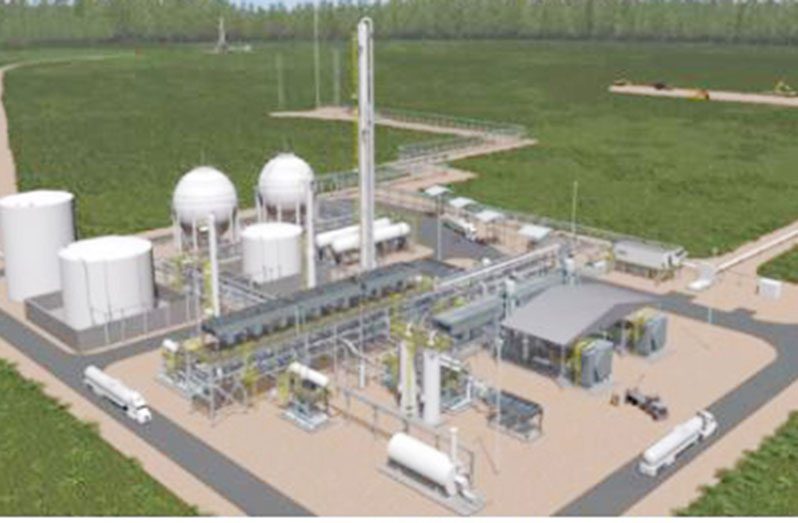–Co-Director of Energy Practice at Americas Market Intelligence
OWING to major discoveries of oil offshore Guyana, the country is not only on course to becoming a major producer of this lucrative resource, but it is also set to become a major export hub for gas — an accompanying resource discovered while drilling wells.
Already, the nation which is nestled at the edge of South America, has earned over US$534 million in direct revenue from its burgeoning oil and gas sector. And based on preliminary assessments of the Stabroek Block offshore Guyana, the producer, ExxonMobil, believes that there is scope for 10 projects, which could generate billions of U.S. dollars in revenue for Guyana over the coming years.
The Stabroek Block is 6.6 million acres (26,800 square kilometres), with current discovered recoverable resources estimated at more than 10 billion oil-equivalent barrels.
As reported by OilNOW, large volumes of gas at the Stabroek Block offshore Guyana pave the way for the nation to become an export hub.
The local resource centre quoted Co-Director of Energy Practice at Americas Market Intelligence, Arthur Deakin, as saying: “The total, projected reserves are estimated to be double that [10 billion oil equivalent barrels] and around 20 per cent of this will be gas. But we’ve even heard from our sources that the actual amount of gas is likely to be much more than what has been revealed so far.”
He added: “So, honestly, I think that the gas is going to be a tremendous monetisation opportunity in Guyana, and we see it becoming a gas-exporting hub for CARICOM.”
In addition to the financial benefits of natural gas, oil giant Shell Global reported that it is the cleanest-burning hydrocarbon, producing around half the carbon dioxide (CO2) and just one tenth of the air pollutants of coal when burnt to generate electricity. There is enormous potential to reduce near-term CO2 emissions and air pollution by using gas instead of coal.
“It is versatile. A gas-fired power station takes much less time to start and stop than a coal-fired plant. This flexibility makes it a good partner to renewable sources of energy such as solar and wind, which are only available when the sun shines and the wind blows,” the company said.
Cognisant of the benefits of this resource, the Government of Guyana has already incorporated the use of natural gas into some of its plans, which will be operationalised soon.
There are already plans on stream to develop a gas-to-energy project at Wales, West Bank Demerara.
The project is expected to reduce the cost of power by 50 per cent, put more disposable income into the pockets of ordinary families and improve the ease of doing business.
Both President Dr Irfaan Ali and Vice-President Bharrat Jagdeo have said that even though Guyana has every intention to extract and market its oil resources, the operations will be done in a manner that minimises environmental harm.
The government has said that it will be utilising the country’s oil revenues to execute a number of developmental projects, including those that serve to advance the fight against climate change.
In that fight, achieving at least 75 per cent renewable energy is paramount, and will be driven largely by an energy mix which will utilise hydro, solar, wind and natural gas.
The gas-to-shore project aside, the government is also moving aggressively to realise the Amaila Falls Hydropower Project which was unjustifiably quashed under the David Granger-led government. Also in the pipeline is the establishment of a number of mini hydropower plants and solar farms.
Vice-President Jagdeo had previously made it clear that even though Guyana will be developing its oil resources, it will still fulfil its global responsibilities in the fight to achieve net zero carbon emission targets by 2050.
There have been concerns that, in an emissions-free world, Guyana will have to pump the brake on its oil production; however, Jagdeo has maintained that his government has no intention to do so.
On the contrary, the former President said that the People’s Progressive Party/Civic (PPP/C) government will be positioning Guyana to become a long-term oil producer, since there will be a daily global demand of 24 million barrels of oil, even in an emissions-free world.
Moving ahead, considering the immense direct and indirect benefits that will accrue to Guyana from the oil and gas sector, President Ali had said key initiatives like [sic] the Natural Resources Fund Act and Local Content Legislation will be used to manage the sector.
“Resources will be used to enhance the traditional economy and create a pathway to build sustainable and diversified sectors to bring long-term prosperity,” Dr. Ali said.
The overarching plan, as outlined by the Head of State, is to build an equitable society, in which every Guyanese, irrespective of the region in which they live, irrespective of their ethnic or religious backgrounds, would have an equal opportunity and stake in the development of the country.












